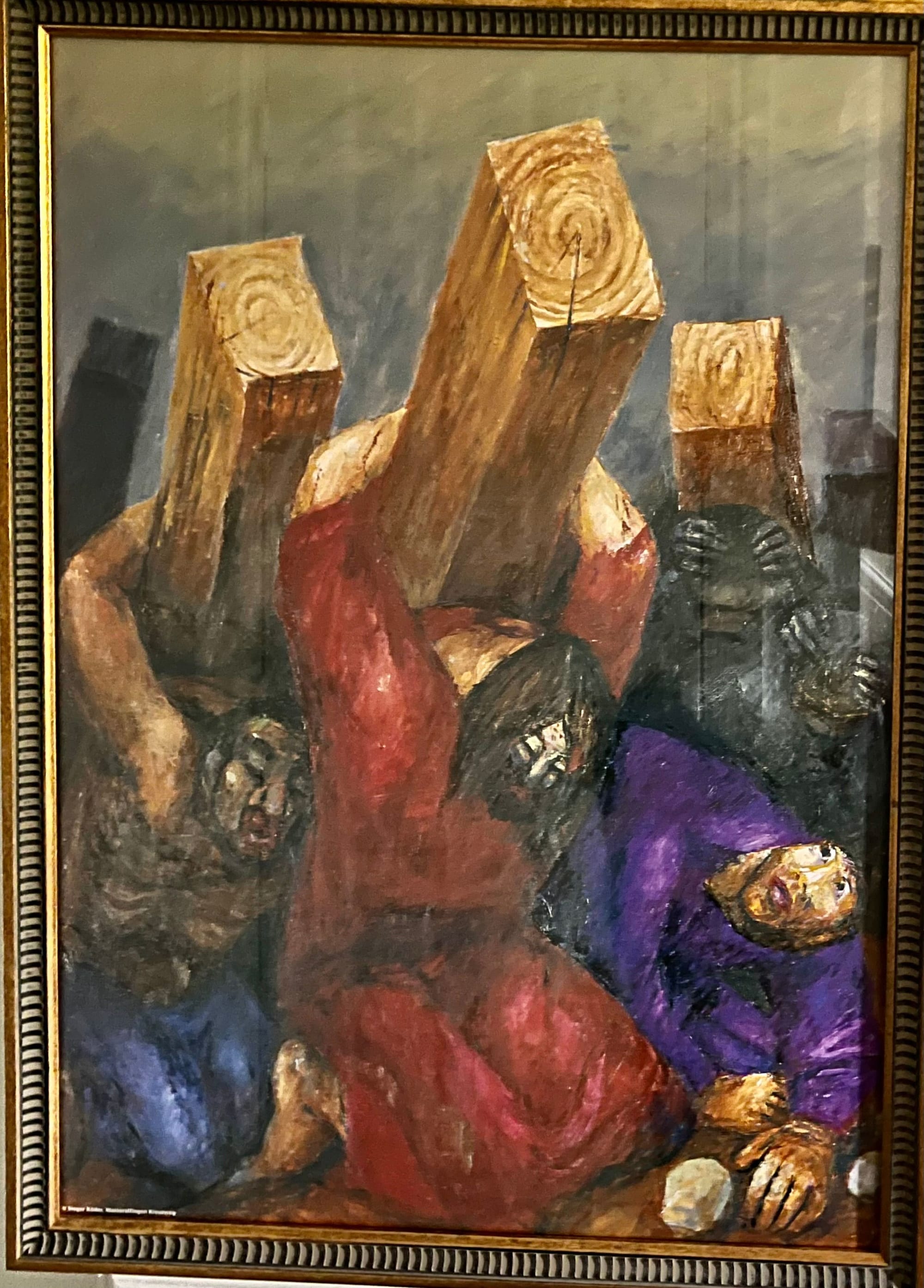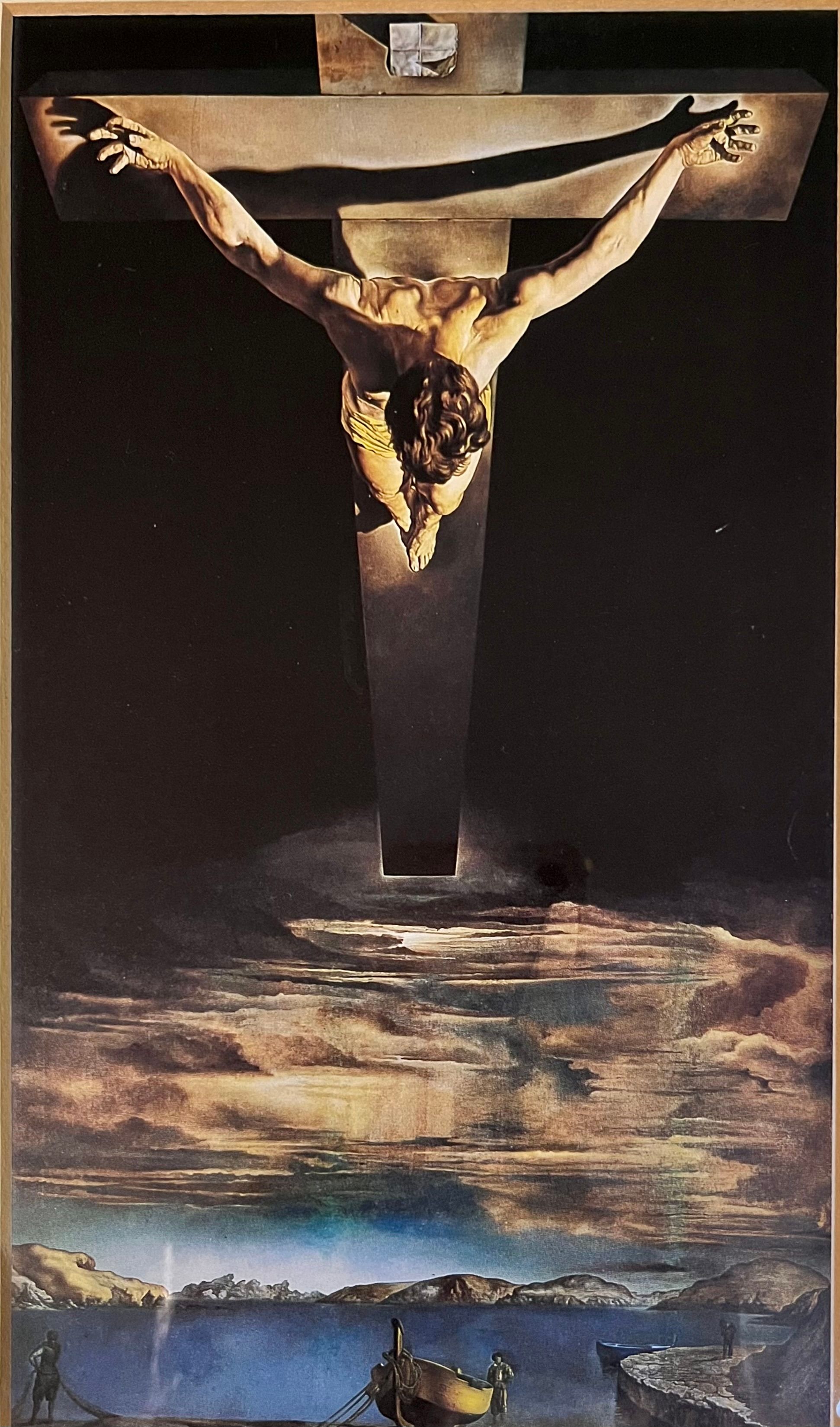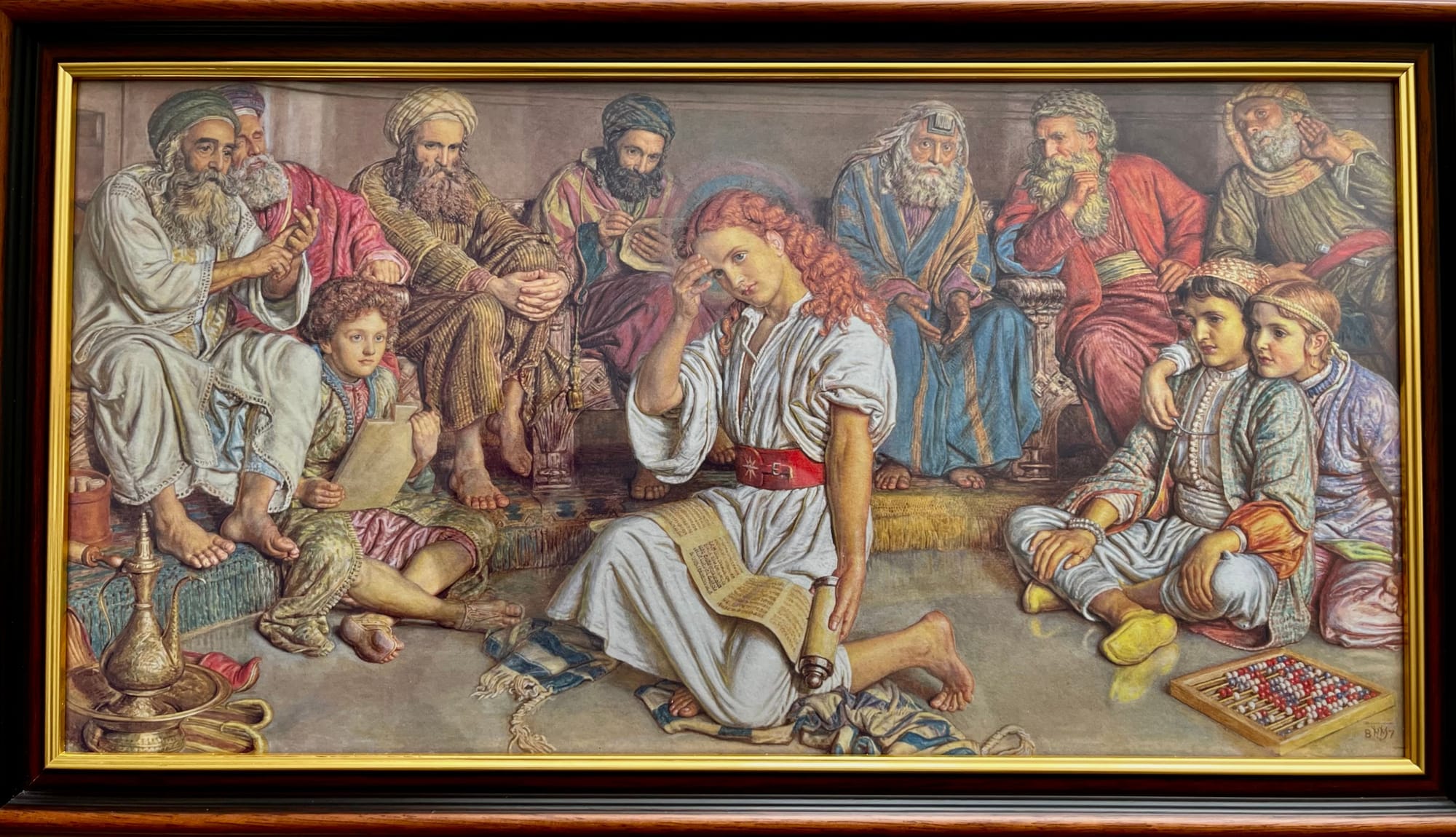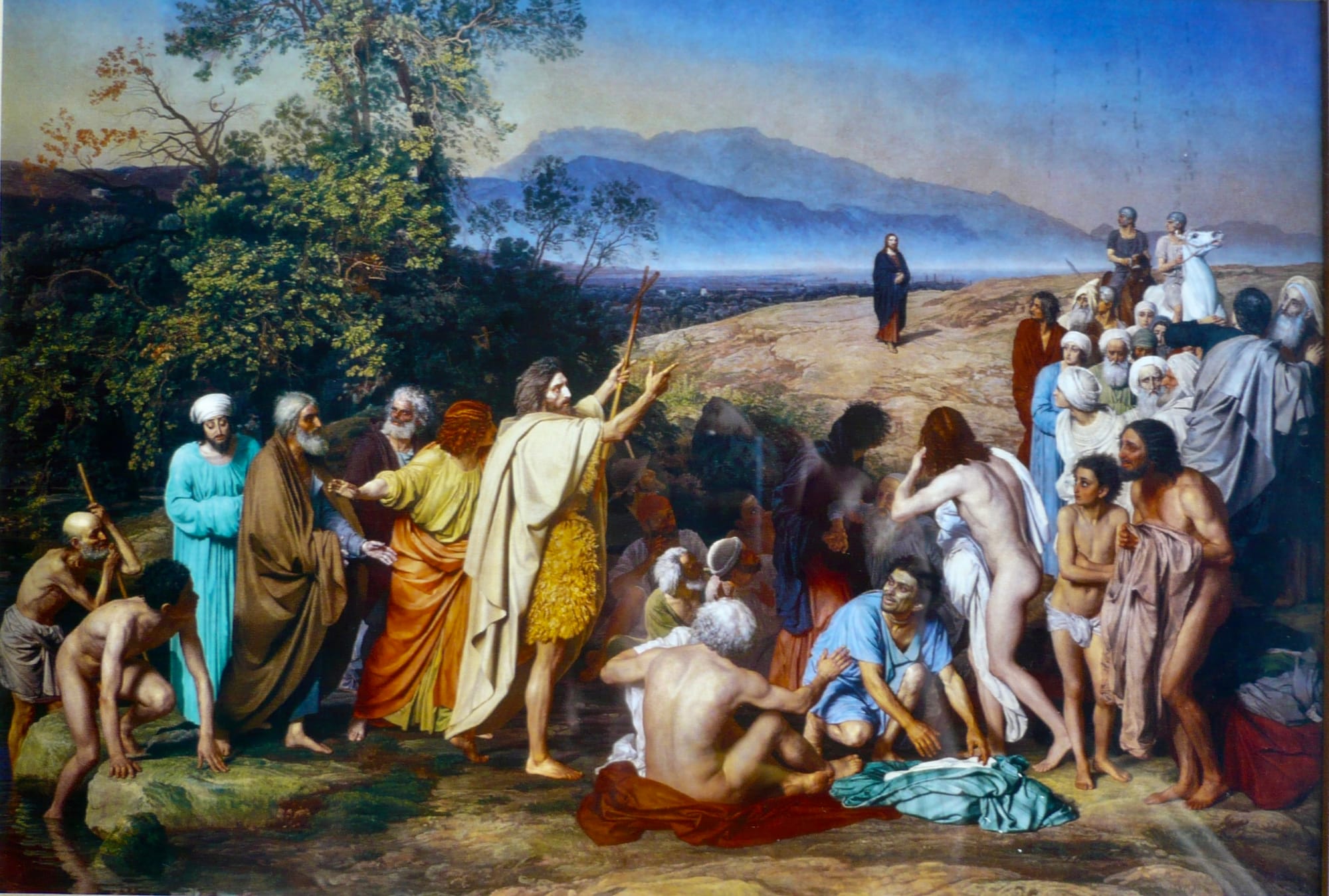Christo
Welcome to my religious gallery
This gallery presents a deeply personal collection of paintings, each centered on the life and presence of Christ. The first two works offer strikingly different interpretations of Christ and the Cross—each unique in style and emotional tone, yet united in their spiritual gravity. The next pair shifts focus to Christ’s youth, capturing moments where He reveals His gifts: one through intellectual debate, the other through humble craftsmanship. These scenes remind us that divinity often appears in the quiet strength of everyday life. And finally, the centrepiece of the collection—The Apparition of Christ to the People by Aleksandr Ivanov. A monumental masterpiece that transcends time, this painting stands as the emotional and spiritual summit of the gallery.
Kreuzwegstation by Sieger Koder
A powerful and poignant portrayal of Christ bearing the cross on His journey to crucifixion. In this interpretation, the wooden beams are rendered with striking weight and texture, evoking the physical agony and spiritual burden of the moment. The composition invites reflection on suffering, sacrifice, and redemption. Created by Sieger Köder (1925–2015), a German artist and Catholic priest, the painting reflects his profound theological insight and devotion. Köder’s dual vocation infused his work with a rare blend of artistic sensitivity and spiritual resonance, making his Christ-themed pieces both deeply human and divinely inspired.

Christ of St. John of the Cross by Salvador Dali
For me, this is one of Dalí’s most haunting and transcendent works. I first saw it at the Glasgow Art Gallery—now housed in Kelvingrove, where its impact remains undiminished. Dalí’s depiction of Christ is unconventional: viewed from above, suspended in silence over the still waters of Lake Galilee. There’s no blood, no crown of thorns—just the stark geometry of the cross and the vastness below. The dizzying perspective stirred controversy when unveiled in 1952, with some critics calling it sacrilegious. Yet Dalí’s vision, inspired by a 16th-century drawing by John of the Cross, is mystical and intimate—an imagined view of the crucifix as seen by a dying man. This painting doesn’t merely depict suffering; it elevates it, inviting us to witness the crucifixion from above, where pain dissolves into transcendence.

Christ in the Carpenter’s Shop by William Blake 1757-1827
This is not a scene of divine glory—it’s sweat, splinters, and silence. Blake’s Christ is young, barefoot, and bent over the tools of labor. The workshop is dim, cluttered, and ordinary. There’s no halo, no miracle—just the quiet weight of wood and the foreshadowing of a cross yet to come. Blake doesn’t dress the moment in grandeur. Instead, he shows us a God who works with His hands, who lives among sawdust and strain. The humility here isn’t symbolic—it’s physical. It’s the ache of muscles, the patience of repetition, the dignity of work. And in that realism, the sacred becomes startlingly close.

Christ Among The consultants by William Holman Hunt
Imagine being 13 years old and walking into a room full of the most respected scholars of your time. They’re older, confident, and used to having the answers—until you start speaking. That’s the moment captured in William Holman Hunt’s painting of young Jesus in the temple, surrounded by astonished elders. He’s not just asking questions—He’s offering profound insights that unsettle even the experts. You can see the tension in their faces: confusion, admiration, disbelief. Yet Jesus stands calm and assured, radiating wisdom beyond His years. It’s a reminder that truth can emerge from unexpected places—even from a boy who knows exactly who He is. Side note: This scene draws inspiration from the Apocryphal Gospel of St Thomas. Though not part of the official biblical canon, it offers a compelling glimpse into how Christ’s early life has been imagined across time.

The Apparition of Christ to the People by Aleksandr Andreyevich Ivanov
Ivanov’s masterpiece is, without question, my favourite painting of all time. His depiction of John the Baptist greeting Christ as He returns from the desert is monumental—not just in scale, but in spiritual gravity. The original spans an entire wall of the Tretyakov Gallery in Moscow, where I’ve visited three times—and never tire of it. Though my version is only a facsimile, it still carries the emotional weight of the original. The figures—etched with anticipation, doubt, and awe—surround the quiet, humble presence of Christ, whose arrival shifts the atmosphere. Ivanov spent over 20 years on this work, and that devotion is felt in every brushstroke. What moves me most is the humanity of the scene. This isn’t just a biblical moment—it’s a gathering of real people, each responding in their own way to the arrival of the Messiah. The painting doesn’t shout; it waits. And in that waiting, it invites reflection, reverence, and timeless awe.
